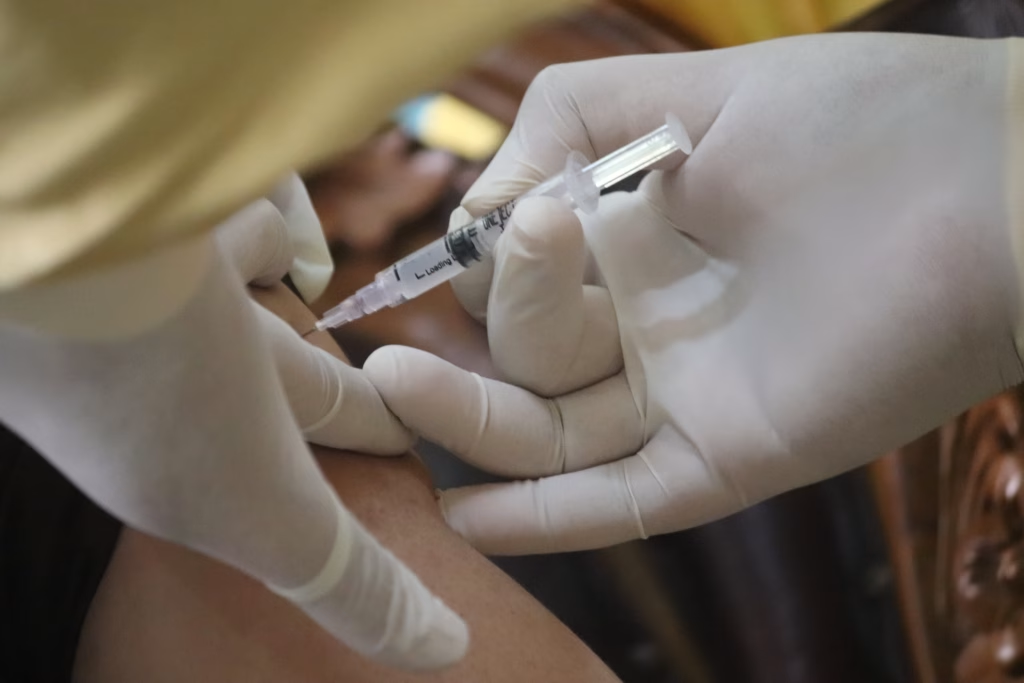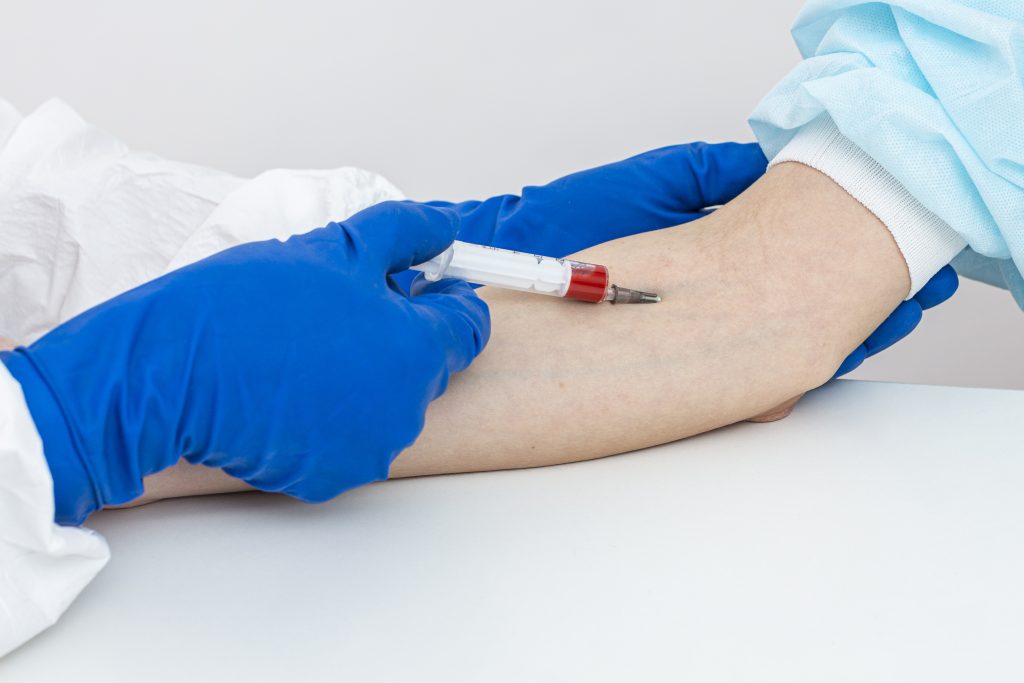Vein Treatment Palm Beach Gardens, FL
Vein Treatments at Motion Orthopedic & Podiatry Institute
Motion Orthopedic & Podiatry Institute provides specialized vein treatments to help patients manage and improve conditions related to venous insufficiency and varicose veins. Our comprehensive approach to vein care ensures that we address both the aesthetic concerns and the underlying medical issues contributing to vein disorders. With advanced, minimally invasive treatments, our goal is to relieve symptoms, prevent complications, and restore the appearance and health of your legs. Whether you’re dealing with unsightly varicose veins, spider veins, or more complex vein disorders, our experienced vascular specialists are here to provide effective and personalized care.
What are Vein Disorders?
Vein disorders occur when the veins in the body, particularly the legs, become weakened or damaged, impairing their ability to circulate blood back to the heart properly. This can lead to blood pooling in the veins, causing them to enlarge, twist, and become more visible under the skin. Over time, these conditions can lead to pain, swelling, skin changes, and even severe complications such as blood clots or ulcers.
Some of the most common vein disorders include:
- Varicose Veins: Varicose veins are enlarged, swollen, and twisted veins that typically appear on the legs and feet. They develop when the valves in the veins become weak or damaged, causing blood to pool and the veins to bulge. Varicose veins can cause discomfort, heaviness, and aching in the legs, as well as cosmetic concerns.
- Spider Veins: Spider veins are small, thin veins that appear close to the skin’s surface. They are usually red, blue, or purple and often resemble a spider web or tree branches. While spider veins are generally not painful, they can be a cosmetic concern for many people.
- Chronic Venous Insufficiency (CVI): CVI is a more severe condition that occurs when the veins in the legs cannot efficiently return blood to the heart. This can lead to symptoms such as swelling, aching, skin changes, and, in severe cases, leg ulcers.
- Deep Vein Thrombosis (DVT): DVT is a condition in which a blood clot forms in a deep vein, usually in the leg. If the clot travels to the lungs and causes a pulmonary embolism, it can be life-threatening. DVT requires immediate medical attention.
Causes of Vein Disorders
Several factors can contribute to the development of vein disorders, including:
- Age: As we age, the valves in our veins can weaken, leading to reduced blood flow and increased risk of varicose veins or other venous conditions.
- Genetics: A family history of vein disorders can increase your risk of developing varicose or spider veins.
- Prolonged Standing or Sitting: Jobs that require long periods of standing or sitting can increase pressure on the veins in the legs, contributing to the development of vein disorders.
- Pregnancy: Increased blood volume and hormonal changes during pregnancy can put additional strain on the veins, leading to varicose veins. These veins often improve after childbirth, but some may persist.
- Obesity: Carrying excess weight can place extra pressure on the veins in the legs, increasing the risk of vein disorders.
- Inactivity: Lack of physical activity can contribute to poor circulation and increase the risk of developing venous insufficiency and varicose veins.
- Hormonal Changes: Hormonal changes, particularly in women during pregnancy, menopause, or while using birth control, can weaken vein walls and increase the risk of vein issues.
Symptoms of Vein Disorders
Vein disorders can cause a variety of symptoms, ranging from cosmetic concerns to more serious medical issues. Common symptoms of vein disorders include:
- Visible Veins: Enlarged, twisted veins visible just beneath the skin, often appearing blue, purple, or red.
- Leg Pain or Discomfort: Aching, throbbing, or heaviness in the legs, especially after standing or sitting for long periods.
- Swelling: Swelling in the lower legs or ankles, which may worsen throughout the day.
- Skin Changes: Changes in the color or texture of the skin around the affected veins, including redness, itching, or the development of skin ulcers.
- Restless Legs: A frequent urge to move the legs, particularly at night, can indicate venous insufficiency.
- Heaviness or Fatigue in the Legs: Many patients report feeling heaviness or fatigue in their legs, especially at the end of the day or after prolonged activity.
If you are experiencing any of these symptoms, seeking medical attention to prevent the condition from worsening and discussing treatment options is important.
Our Approach to Vein Treatments
At Motion Orthopedic & Podiatry Institute, we offer a comprehensive range of vein treatments to address the medical and cosmetic concerns associated with vein disorders. Our specialists use state-of-the-art, minimally invasive procedures to provide adequate relief with minimal discomfort and downtime. Each treatment plan is tailored to meet the individual needs of the patient, ensuring the best possible outcomes.
Non-Surgical Vein Treatments
Many vein conditions can be effectively treated with non-surgical, minimally invasive procedures. These treatments offer faster recovery times, less discomfort, and minimal scarring compared to traditional surgery.
- Sclerotherapy: Sclerotherapy is one of the most common varicose and spider veins treatments. During this procedure, a special solution is injected directly into the affected veins, causing them to collapse and gradually fade. Sclerotherapy is highly effective for small to medium-sized veins and requires no downtime, allowing patients to return to normal activities the same day.
- Endovenous Laser Therapy (EVLT): EVLT is a minimally invasive procedure that uses laser energy to close off large varicose veins. A small laser fiber is inserted into the vein, and the heat from the laser causes the vein to collapse and seal shut. Blood is naturally rerouted to healthier veins, and the treated vein eventually fades from view. EVLT is performed under local anesthesia and typically requires minimal recovery time.
- Radiofrequency Ablation (RFA): Like EVLT, radiofrequency ablation uses heat to close off varicose veins. However, instead of a laser, radiofrequency energy is delivered through a thin catheter to heat the vein wall, causing it to collapse and seal shut. Like EVLT, RFA is minimally invasive and requires only local anesthesia, with most patients returning to normal activities within a few days.
- Compression Therapy: Compression stockings are often recommended as part of a vein treatment plan, particularly for patients with chronic venous insufficiency. Compression stockings help improve blood flow by applying gentle pressure to the legs, reducing swelling and preventing blood pooling in the veins. Compression therapy can also be used as a preventive measure to slow the progression of vein disorders.
- VenaSeal Closure System: VenaSeal is an innovative, minimally invasive treatment that uses a medical adhesive to seal off varicose veins. During the procedure, a small amount of adhesive is injected into the affected vein, causing it to close off. The body then absorbs the vein over time. VenaSeal is highly effective and typically requires less recovery time than other vein treatments, as there is no need for heat or sclerosants.
Surgical Vein Treatments
In some cases, surgical intervention may be necessary for patients with severe vein disorders or when non-surgical treatments are not effective. At Motion Orthopedic & Podiatry Institute, we offer advanced surgical options for long-term relief of vein-related issues.
- Vein Stripping and Ligation: Vein stripping is a surgical procedure to remove large varicose veins. The problematic vein is tied off (ligation) and removed from the body through small incisions during this procedure. This is typically performed under general or local anesthesia, and while recovery may take a little longer than minimally invasive treatments, it is highly effective in treating severe varicose veins.
- Ambulatory Phlebectomy: Ambulatory phlebectomy is a minimally invasive surgical procedure that removes smaller varicose veins through tiny incisions. The veins are carefully removed using a unique hook tool, and no stitches are required. This procedure is often used in conjunction with other vein treatments, such as EVLT or sclerotherapy.
- Surgical Repair of Venous Ulcers: For patients with chronic venous insufficiency or severe cases of varicose veins, venous ulcers may develop. These ulcers are slow-healing wounds that can become infected if not properly treated. Surgical repair of venous ulcers involves cleaning and closing the ulcer while addressing the underlying vein problem to prevent recurrence.

Recovery and Aftercare for Vein Treatments
Recovery from vein treatments varies depending on the type of procedure performed. In most cases, patients experience minimal downtime and can return to their regular activities within a few days. Following vein treatment, patients may be instructed to:
- Wear Compression Stockings: Compression stockings are often recommended after vein procedures to promote blood flow, reduce swelling, and support healing.
- Avoid Prolonged Sitting or Standing: To prevent blood from pooling in the legs, patients are encouraged to stay active and avoid prolonged periods of sitting or standing.
- Elevate the Legs: Elevating the legs can help reduce swelling and discomfort during recovery.
- Follow-Up Care: Regular follow-up appointments are essential to monitor the success of the treatment and ensure that no new vein issues develop.
Why Choose Motion Orthopedic & Podiatry Institute for Vein Treatments?
At Motion Orthopedic & Podiatry Institute, we are committed to providing our patients with the highest quality vein care. Here’s why patients choose us for their vein treatments:
- Experienced Specialists: Our team of board-certified specialists has extensive experience diagnosing and treating vein disorders. We use the latest techniques and technologies to ensure the best possible outcomes for our patients.
- Comprehensive Care: From conservative treatments to advanced surgical options, we offer a full range of vein care services tailored to your unique needs. Whether you’re seeking treatment for cosmetic reasons or to alleviate medical symptoms, we are here to provide expert care.
- Minimally Invasive Solutions: We prioritize minimally invasive treatments whenever possible, allowing faster recovery times, less discomfort, and excellent results.
- Patient-Centered Approach: We take the time to listen to your concerns, evaluate your condition, and create a personalized treatment plan that meets your goals. Our team is dedicated to ensuring you feel comfortable and informed throughout the process.
If you’re experiencing discomfort or cosmetic concerns related to varicose veins, spider veins, or other venous disorders, the Motion Orthopedic & Podiatry Institute team is here to help. Contact us today to schedule a consultation and learn more about our comprehensive vein treatment options.
- Orthopedic Surgery
- Podiatry Care
- Regenerative Medicine
- Sports Medicine
- Vein Treatment
- Arthroscopic & Joint Replacement Surgery:
- Knee Pain
- Shoulder Pain
- Hip Pain
- Sports Injuries
- Tendonitis and Bursitis
- Carpal Tunnel Syndrome
- Trigger Finger
- Wound Care
- Concierge Orthopaedic Services
